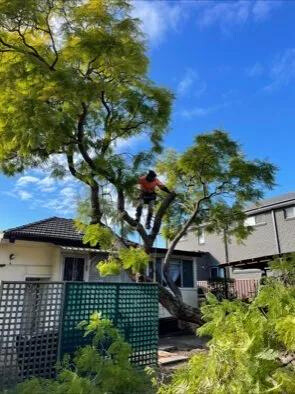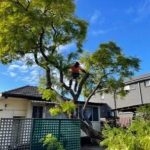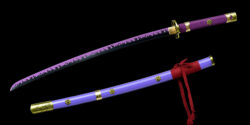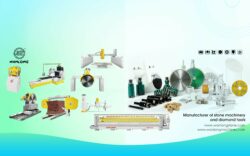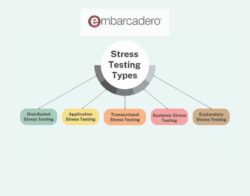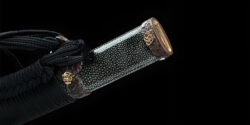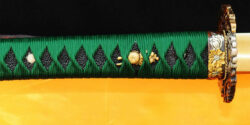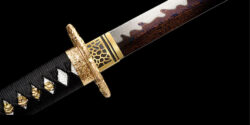Understanding Palm Tree Diseases and When Removal is Necessary
Palm trees are iconic symbols of tropical beauty, adorning the landscapes of many regions worldwide. Their swaying fronds and graceful stature provide aesthetic appeal, shade, and a habitat for various wildlife. However, like all living organisms, palm trees are susceptible to diseases that can threaten their health and, in some cases, necessitate their removal. This article will explore standard palm tree removal Sydney diseases, their symptoms, prevention strategies, and when removal becomes the only option.
The Beauty of Palm Trees
Before delving into palm tree diseases, let’s appreciate why these trees are beloved by so many. Palm trees, with their tall trunks and elegant fronds, create a picturesque scene that evokes feelings of relaxation and paradise. Their presence can transform any landscape into a tropical oasis, making them a sought-after addition to gardens, resorts, and urban environments.
Common Palm Tree Diseases
While palm trees are hardy and resilient, they are not immune to diseases. Several common ailments can affect these magnificent trees, potentially compromising their health and longevity. Let’s explore some of these diseases:
Fusarium Wilt (Fusarium oxysporum)
Fusarium wilt, often Panama disease, is a devastating palm tree disease caused by the fungus Fusarium oxysporum. This pathogen primarily affects species like the Canary Island date palm and the Queen’s palm. Symptoms include yellowing fronds, drooping leaves, and overall tree wilting. As the disease progresses, it can lead to the death of the palm.
Ganoderma Butt Rot (Ganoderma zonatum)
Ganoderma butt rot is caused by the fungus Ganoderma zonatum and is a severe threat to palm trees. It usually enters through wounds in the tree’s trunk, often occurring during transplanting or pruning. The disease slowly rots the palm’s lower trunk, causing a loss of stability and nutrient supply. Infected trees may display stunted growth, a conk (shelf-like fungal growth) at the base, and a decline in overall health.
Palm Leaf Spot Diseases
Several fungi can cause leaf spot diseases in palm trees. The appearance of small, round spots on the fronds characterizes these diseases. While not typically fatal, severe cases can lead to reduced photosynthesis and aesthetic damage to the palm’s foliage. Fungicides and proper sanitation are crucial for managing leaf spot diseases.
Texas Phoenix Palm Decline (TPPD)
Texas Phoenix Palm Decline is a lethal disease caused by phytoplasma, a microscopic organism lacking a cell wall. This disease affects various palm species and is transmitted by an insect called the palm leafhopper. Early signs include yellowing and drooping fronds, followed by the eventual death of the palm tree. There is no cure for TPPD, making early detection and removal essential.
Recognizing the Symptoms
Recognizing their symptoms on time is crucial to address palm tree diseases effectively. Early detection can often mean the difference between saving a tree and needing to remove it. Here are some common symptoms to watch for:
Yellowing Fronds: One of the most noticeable signs of palm tree distress is the yellowing of fronds. Healthy fronds should be green and vibrant, so any yellowing or browning indicates a problem.
Drooping or Wilting Leaves: Healthy palm leaves should stand upright or arch gracefully. Drooping or wilting leaves can be an early indicator of disease or stress.
Leaf Spots: If you notice small, discoloured spots on the fronds, it could indicate a leaf spot disease. While not immediately life-threatening, it can weaken the palm tree over time.
Conks or Mushroom-Like Growths: The presence of conks or mushroom-like growths at the tree’s base is a clear sign of Ganoderma butt rot, a disease that can ultimately lead to the tree’s demise.
Thinning Canopy: A palm tree with a noticeably thinner canopy or fewer fronds may suffer from a disease or nutritional deficiency.
Preventing Palm Tree Diseases
Prevention is often the best strategy when it comes to palm tree diseases. Keeping your palm trees healthy reduces their vulnerability to pathogens. Here are some preventive measures to consider:
Proper Planting and Maintenance
Start with a healthy tree from a reputable source and ensure it is planted correctly. Avoid injuring the tree during planting or maintenance activities, as wounds can provide entry points for pathogens.
Regular Pruning and Trimming
Regular pruning helps remove dead or diseased fronds, reducing the risk of disease spread. However, sanitize your pruning tools between trees to prevent cross-contamination.
Irrigation Management
Proper watering is crucial for palm tree health. Overwatering can lead to root rot, while underwatering can stress the tree, making it more susceptible to diseases. Research the specific water needs of your palm species and maintain an appropriate watering schedule.
Fertilization
Palm trees require essential nutrients for optimal growth. Regular fertilization can help ensure your trees receive the necessary nutrients. Consult with a local horticulturist or nursery for guidance on appropriate fertilizers and application methods.
Insect Control
Insects can vector diseases to palm trees. Regularly inspect your palms for signs of infestation, and consider appropriate insect control measures if necessary.
Soil Health
Maintaining healthy soil conditions is vital for palm tree vitality. Proper soil testing and amendments can improve nutrient availability and drainage, reducing stress on the tree.
When Removal is Necessary
Despite our best efforts, there may come a time when palm tree removal becomes the only viable option. Here are some scenarios in which removal is necessary:
Advanced Disease
If a palm tree is severely infected with a disease like Fusarium wilt or Texas Phoenix Palm Decline, removal may be the only way to prevent the disease from spreading to nearby healthy trees.
Structural Instability
Ganoderma butt rot and other trunk diseases can weaken a palm tree’s structural integrity, making it a safety hazard. Removal is essential if the tree becomes unstable and poses a risk to people or property.
Incurable Diseases
In cases where a palm tree is infected with an incurable disease, such as TPPD, it should be promptly removed to prevent the disease from spreading to other palms.
Aesthetic Reasons
While not always necessary for the palm’s health, removal might be considered for aesthetic reasons. If a palm tree’s appearance is severely compromised due to disease, some property owners may remove it and plant a healthy replacement.
Conclusion
Palm trees are captivating and iconic elements of many landscapes, but they are not immune to diseases that can threaten their health and beauty. Understanding the common diseases that affect palm trees, recognizing their symptoms, and taking preventive measures can help preserve these majestic trees. However, removal may be the only option to protect other trees, people, and property in some cases. By staying informed and proactive, we can ensure that local tree removal services sydney continue to enhance our environments and evoke feelings of paradise for generations to come.
